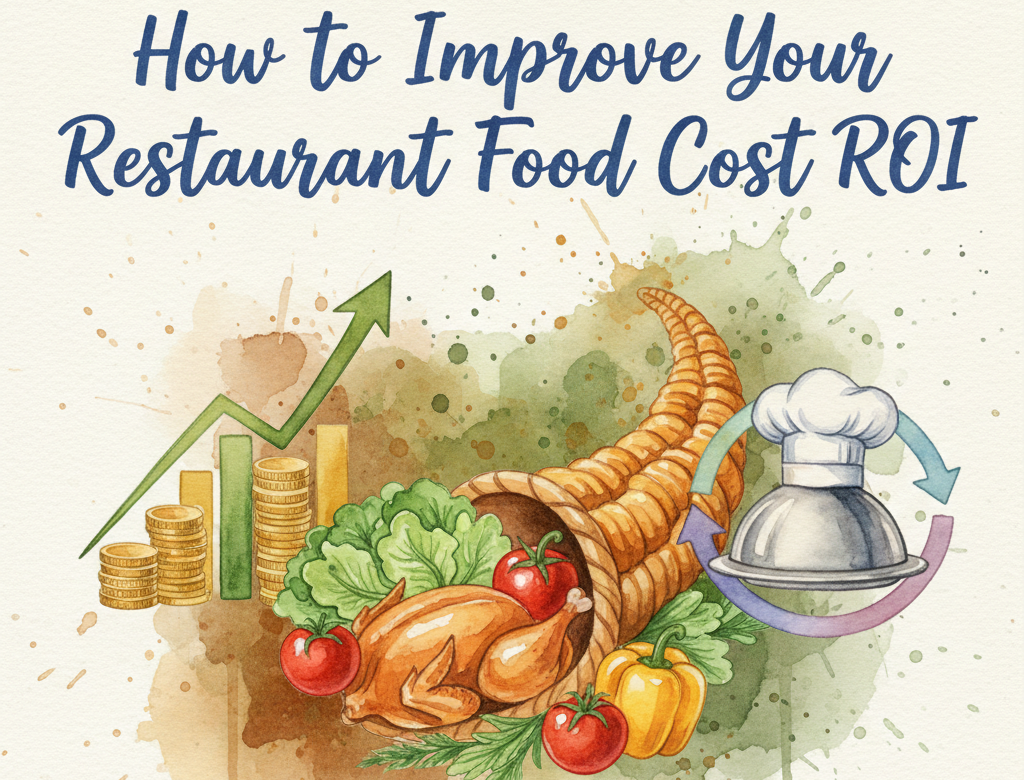In the dynamic landscape of the restaurant industry, success hinges not only on the quality of food but also on the efficiency of operations. By continually refining processes and embracing innovative technologies, restaurant owners can enhance operations and drive profitability. In this guide, we explore actionable strategies to streamline ordering and payment processes, optimize kitchen operations, and elevate customer service.
Streamline Ordering and Payment Processes:
1. Implement an Online Ordering System:
In today’s digital age, convenience is key. By setting up an intuitive online ordering system, restaurants can cater to the preferences of tech-savvy customers. This not only reduces the hassle for patrons but also streamlines order processing for staff. Integration with the point-of-sale (POS) system ensures seamless order fulfillment, enhancing overall efficiency.
2. Utilize Self-Service Order Kiosks:
Self-service kiosks offer patrons autonomy in placing and customizing their orders. By minimizing order errors and expediting the ordering process, these kiosks optimize staff allocation, allowing employees to focus on tasks that require human interaction. User-friendly interfaces are essential to ensure a smooth experience for customers.
3. Accept Mobile Payments:
Mobile payment options such as Apple Pay and Google Pay offer customers a convenient and secure way to settle their bills. By embracing these technologies, restaurants can reduce wait times and enhance customer satisfaction. Comprehensive staff training ensures that employees can assist patrons in navigating various mobile payment methods seamlessly.
Optimize Kitchen Operations:
1. Invest in Kitchen Automation Technology:
Kitchen automation technology, including automated order management systems and kitchen display systems, revolutionizes back-of-house operations. By minimizing manual errors and facilitating communication between the front and back of the house, these systems enhance efficiency and reduce waste. Automation of processes like ticket routing and ingredient inventory management is pivotal in streamlining operations.
2. Standardize Recipes and Portion Sizes:
Consistency is key in the culinary world. Standardized recipes not only ensure uniformity in taste but also facilitate cost control. By setting portion sizes for each dish, restaurants can mitigate food waste and optimize profitability. Thorough staff training is imperative to ensure adherence to standardized recipes and portion sizes.
3. Use Kitchen Management Software:
Kitchen management software offers invaluable insights into inventory management, supplier orders, and food costs. By leveraging data provided by these systems, restaurants can identify cost-saving opportunities and optimize ingredient usage. Regular analysis of this data empowers decision-makers to make informed choices regarding menu offerings and procurement practices.
Enhance Customer Service:
1. Train and Empower Your Restaurant’s Staff:
Exceptional customer service is the cornerstone of a successful restaurant. Comprehensive staff training equips employees with the knowledge and skills to deliver exceptional experiences. Encouraging staff to engage with patrons, make personalized recommendations, and promptly address any issues fosters customer satisfaction and loyalty.
2. Offer Online Reservation and Waitlist Management:
An efficient reservation and waitlist management system is instrumental in optimizing table turnover and reducing wait times. By offering online reservation options and utilizing text notifications, restaurants can enhance the dining experience for patrons. Effective coordination between front-of-house and kitchen staff is essential to ensure seamless operations.
3. Collect and Analyze Customer Feedback:
Customer feedback is invaluable in identifying areas for improvement and addressing concerns. Regular solicitation of feedback through surveys, online reviews, and comment cards provides insights into customer preferences and satisfaction levels. Actionable steps based on this feedback, whether it involves menu adjustments or service enhancements, demonstrate a commitment to continuous improvement.
FAQs
- What potential challenges or drawbacks are associated with kitchen automation technology, and how can restaurants mitigate them?
While kitchen automation technology offers numerous benefits in streamlining operations, restaurant owners should be mindful of potential challenges that may arise. One such challenge is the initial investment required for acquiring and implementing automation systems. This includes costs associated with purchasing hardware, software licensing, and staff training. Moreover, integrating automation technology into existing workflows may necessitate adjustments to operational processes, which could temporarily disrupt workflow efficiency. Additionally, reliance on technology introduces the risk of technical malfunctions or system failures, which could impact kitchen productivity and customer satisfaction. To mitigate these challenges, restaurant owners should conduct thorough research before investing in automation solutions, select reputable vendors that offer reliable support services, and provide comprehensive training to staff to ensure seamless adoption of new technologies.
- How can restaurants effectively measure the impact of their customer service initiatives and adjust strategies accordingly to enhance the dining experience continually?
Effectively measuring the impact of customer service initiatives requires a multifaceted approach that encompasses both quantitative and qualitative feedback metrics. Restaurants can utilize tools such as customer satisfaction surveys, online review analysis, and comment cards to gather feedback from patrons regarding their dining experiences. Quantitative data, such as customer satisfaction scores and average wait times, provide measurable insights into overall service performance. Qualitative feedback, on the other hand, offers valuable insights into specific areas for improvement and actionable suggestions for enhancing the dining experience. By analyzing both types of feedback in conjunction with key performance indicators (KPIs) such as table turnover rates and repeat customer visits, restaurants can assess the effectiveness of their customer service strategies and identify opportunities for refinement. Regular review meetings with staff to discuss feedback and brainstorm solutions foster a culture of continuous improvement and ensure that customer service remains a top priority for the restaurant.
In the competitive realm of the restaurant industry, maximizing efficiency is paramount to driving profitability and fostering customer loyalty. By streamlining ordering and payment processes, optimizing kitchen operations, and prioritizing exceptional customer service, restaurants can carve out a distinct competitive advantage. Embracing innovation and remaining responsive to evolving consumer preferences are essential for long-term success in this dynamic landscape. Through a relentless focus on operational excellence, restaurants can thrive in an ever-changing market.




